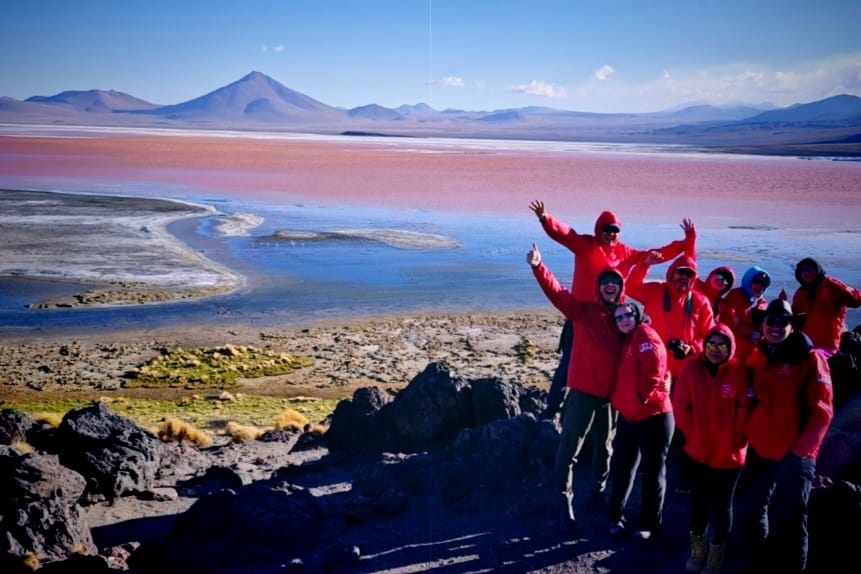Bolivia is home to numerous natural wonders, but few are as captivating as Laguna Colorada. Nestled within the Eduardo Avaroa Andean Fauna National Reserve, this shallow, reddish-colored lagoon is one of the most striking landscapes in the region. Its unique color, abundant wildlife, and surrounding salt flats make it a must-visit destination for nature lovers, photographers, and adventurers alike. But what makes Laguna Colorada so special? Let’s dive into the details.
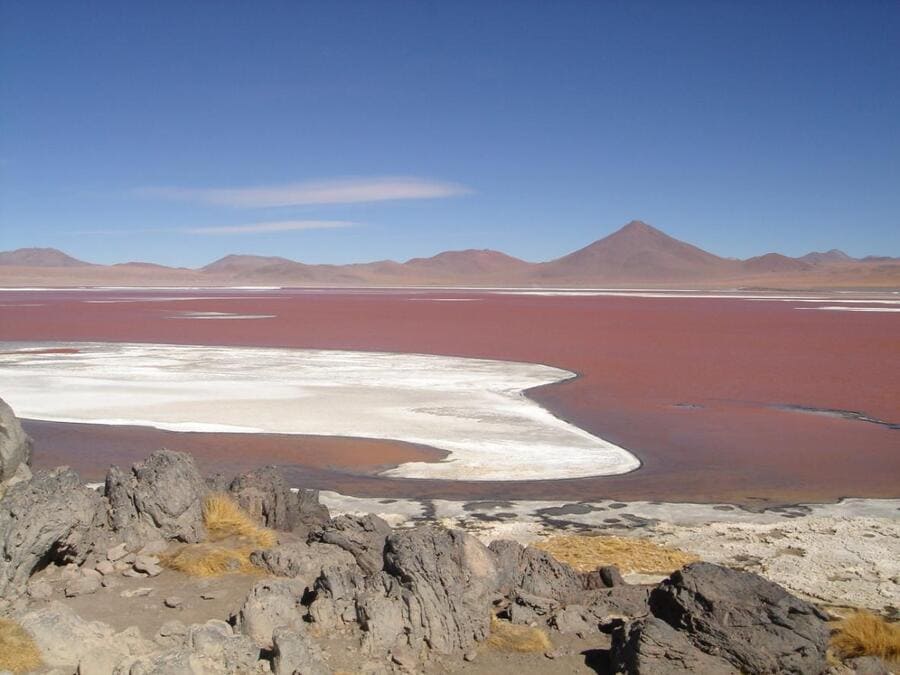
Where is Laguna Colorada?
Location within Bolivia
Laguna Colorada is located in the southwestern corner of Bolivia, near the Chilean border. The lake is situated within the Eduardo Avaroa National Park, in the Andean highlands at an altitude of about 14,000 feet (4,300 meters) above sea level. Its location in the remote Altiplano region makes it an isolated but extraordinary destination for travelers looking to explore Bolivia’s rugged wilderness.
Accessibility to the Lake
While Laguna Colorada is remote, it’s accessible via 4×4 vehicles on guided tours. Most visitors start their journey from the nearby town of Uyuni, famous for its vast salt flats. From Uyuni, it typically takes a few hours to reach the lake, depending on the tour operator and stops along the way.
Unique Features of Laguna Colorada
The Red Water Phenomenon
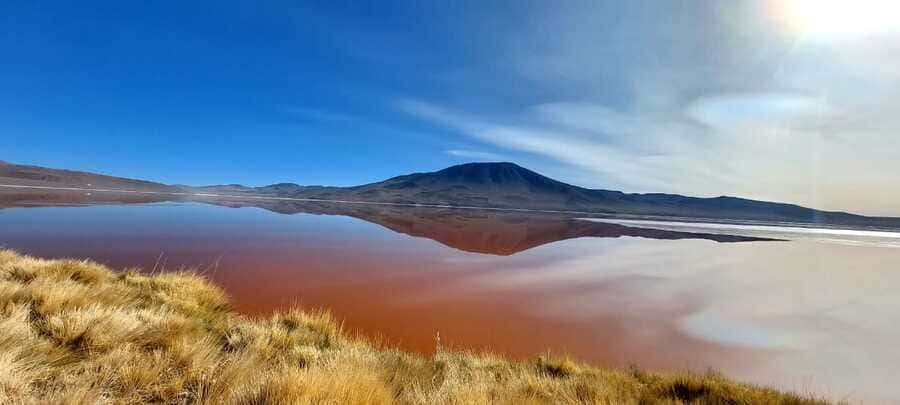
The first thing visitors notice about Laguna Colorada is its vibrant red color. This unique hue is caused by the presence of red algae and plankton in the water, which thrive in the lake’s saline and mineral-rich environment. The color can vary throughout the day, shifting from deep red to lighter orange depending on sunlight and the wind.
Salt Flats Surrounding the Lake
Laguna Colorada is surrounded by vast salt flats, creating a stark contrast to the crimson waters. These salt flats are remnants of ancient lakes that once covered the region, leaving behind thick layers of salt deposits. The flats add to the lake’s surreal beauty and offer a unique landscape for visitors to explore.
Wildlife Around Laguna Colorada
The Famous Andean Flamingos
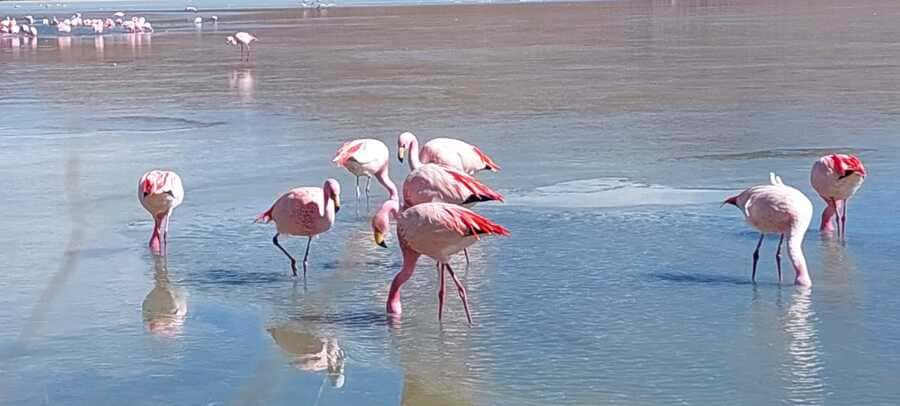
One of the main attractions of Laguna Colorada is its large population of flamingos. The pink flamingos of Laguna Colorada are one of the lake’s most captivating sights. Three species of flamingos are commonly found in the area: the Chilean flamingo, the Andean flamingo, and James’s flamingo. Their pink hue comes from their diet, which is rich in red algae and plankton found in the lake’s mineral-rich waters. This unique diet contains carotenoid pigments that give the flamingos their vibrant pink color.
Breeding usually occurs during the rainy season, and the flamingos gather in large colonies on the shores of Laguna Colorada. They build their nests out of mud in the shallow waters, forming cone-shaped mounds where they lay a single egg. The high salinity of the lake protects the nests from predators, and both parents share the responsibility of incubating the egg and caring for the chick once it hatches.
Feeding is a major activity for the flamingos, as they wade through the shallow red waters filtering out algae and tiny organisms with their specialized beaks. The flamingos are well adapted to the high-altitude environment, thriving in the extreme conditions of the Andean plateau, where other species may struggle. The combination of their beautiful color, unique feeding habits, and fascinating breeding rituals makes the flamingos of Laguna Colorada a truly special aspect of this extraordinary ecosystem.
Other Birds and Animal Species
In addition to flamingos, Laguna Colorada attracts other bird species like the Andean goose, the puna plover, and various species of ducks. The surrounding area is also home to mammals such as the vicuña and the Andean fox, which can often be spotted near the salt flats.
How the Lake Got Its Name
Historical Background
The name “Laguna Colorada” translates to “Red Lagoon” in Spanish, a fitting description given its distinct coloration. The lake has been known to indigenous Andean communities for centuries, and its striking appearance has made it a subject of local legend and folklore.
The Role of Local Communities
For the indigenous communities living in the Altiplano, Laguna Colorada holds cultural and spiritual significance. The lake and its surroundings are often viewed as sacred spaces, and local communities work to protect the fragile ecosystem from over-tourism and environmental degradation.
Importance of Laguna Colorada to Bolivia
Ecological Importance
Laguna Colorada is an essential habitat for several species of wildlife, particularly flamingos. The lake’s saline waters and algae provide a crucial food source for these birds, and the surrounding wetlands support a diverse ecosystem of plant and animal life. This makes the lake a vital ecological area within the Andean highlands.
Tourism and Economic Value
Tourism plays a significant role in the local economy, with many travelers visiting Laguna Colorada as part of larger tours of Bolivia’s natural wonders. The lake’s unique beauty and wildlife attract tourists from around the globe, helping to sustain local businesses and communities.
Climate and Best Time to Visit
Seasonal Variations
Laguna Colorada experiences dry and wet seasons, with the best time to visit typically being from May to October during the dry season. During this time, the lake’s colors are at their most vibrant, and the weather is more predictable, making it easier for travelers to explore the region.
Weather Conditions
At such a high altitude, the weather around Laguna Colorada can be harsh. Temperatures can drop significantly at night, even during the dry season, and visitors should be prepared for cold, windy conditions. However, the clear skies and stunning landscapes make it worth the trip.
Top Activities for Visitors
Bird Watching
Bird watchers will be in paradise at Laguna Colorada. The lake’s flamingo population is its most famous feature, but there are also many other species of birds to observe. Bring binoculars and enjoy the diverse avian life that calls this lake home.
Exploring Salt Flats
The salt flats surrounding Laguna Colorada are otherworldly. Visitors can walk across the flats, take unique photos, and explore the geological formations in the area. These salt flats are remnants of ancient inland seas, offering a glimpse into the region’s geological past.
Photography Opportunities
Laguna Colorada is a dream destination for photographers. Between the flamingos, red waters, salt flats, and dramatic Andean landscapes, there are endless photo opportunities. Sunrise and sunset are particularly magical times to capture the changing colors of the lake.
How to Get to Laguna Colorada
Travel Routes from Major Cities
Most visitors to Laguna Colorada begin their journey from Uyuni, which is accessible by bus or plane from La Paz. From Uyuni, travelers can join organized tours to the lake. These tours often include other stops along the way, such as the Uyuni Salt Flats and nearby geysers.
Best Guided Tours
Numerous tour companies offer trips to Laguna Colorada, with options ranging from single-day excursions to multi-day adventures. It’s advisable to choose a reputable tour operator that prioritizes sustainable tourism and has experienced guides familiar with the region.
Outdoor Xpeditions offers a variety of touring packages to this wonderful place if you’d like to know more about our offers, e.g. see our Uyuni Salt Flat-3 days tour.
Safety Tips for Visitors
Altitude Considerations
Laguna Colorada sits at a high altitude, so visitors should be prepared for the effects of altitude sickness. Symptoms like headaches, nausea, and shortness of breath are common at this elevation, and travelers should acclimatize gradually.
Packing Essentials
Pack warm clothing, sunscreen, a hat, and plenty of water. The high-altitude sun can be intense, and temperatures drop rapidly at night. Also, bring snacks and a camera to capture the stunning scenery.
Sustainable Tourism Practices
Protecting the Environment
Laguna Colorada’s ecosystem is fragile, and visitors should be mindful of their impact. Stick to designated paths, avoid disturbing wildlife, and make sure to leave no trash behind.
Supporting Local Communities
By booking tours with local guides and purchasing goods from community-run businesses, visitors can help support the indigenous communities that call the region home.
Cultural Significance of Laguna Colorada
Indigenous Beliefs
For the indigenous peoples of the Altiplano, Laguna Colorada is a sacred site. The lake is often associated with local myths and spiritual beliefs, and ceremonies are occasionally held to honor the spirits believed to inhabit the area.
Festivals and Rituals
Some local festivals include rituals that celebrate the lake and the surrounding landscape, showcasing the deep connection between the people and their environment.
Fascinating Facts about Laguna Colorada
Color Changes Through the Day
Laguna Colorada’s color isn’t static. Depending on the time of day and the amount of sunlight, the lake can appear deep red, orange, or even pink.
Geothermal Activity in the Region
The area around Laguna Colorada is geothermally active, with nearby geysers and hot springs adding to the surreal landscape. This geothermal activity contributes to the unique mineral composition of the lake.
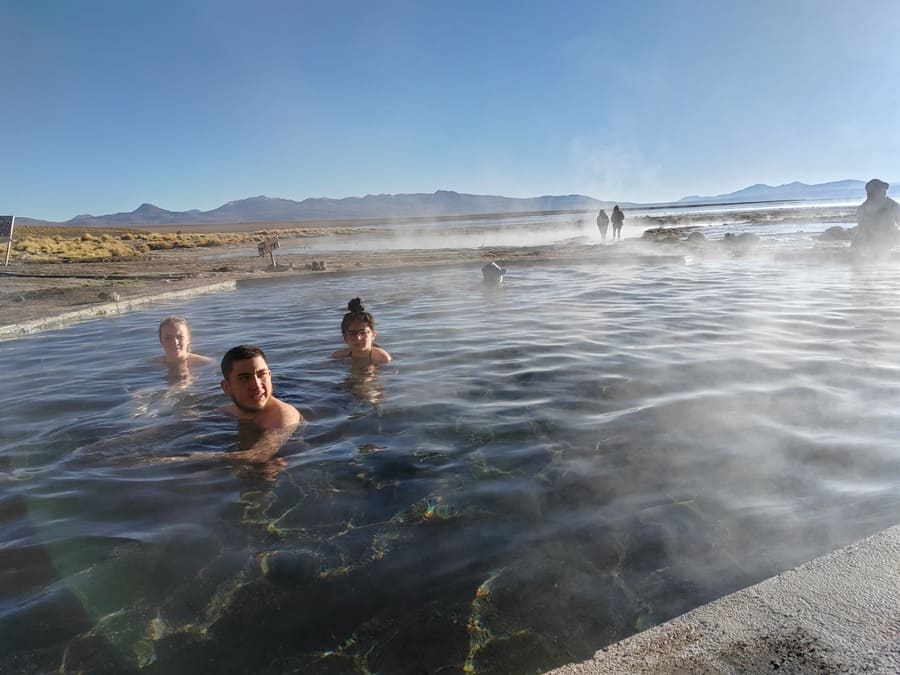
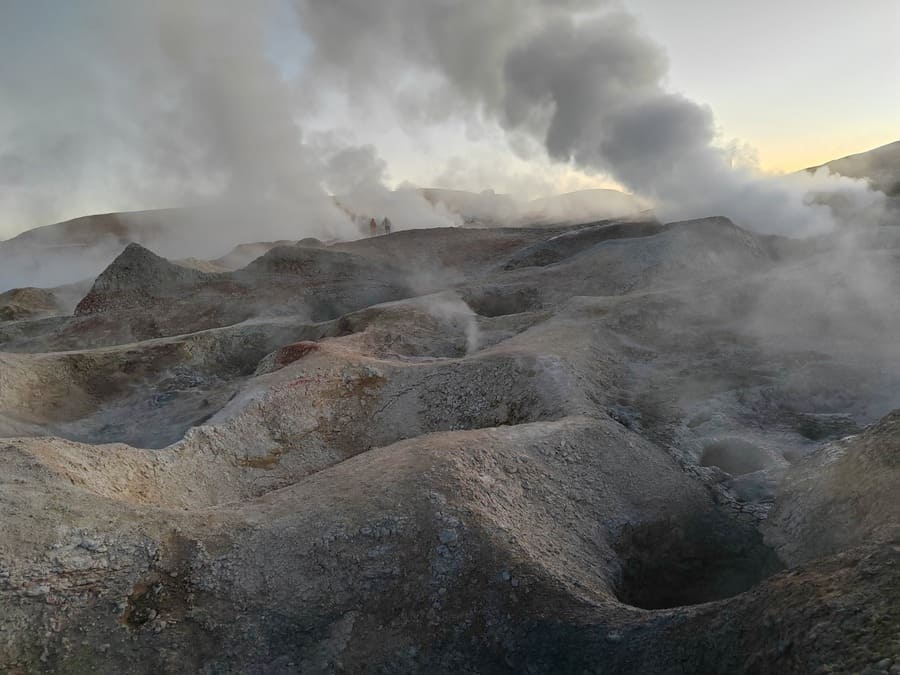
Nearby Attractions
Eduardo Avaroa National Park
Laguna Colorada is part of Eduardo Avaroa National Park, a protected area that’s home to other natural wonders like the Sol de Mañana geysers and Laguna Verde.
Other Salt Lakes and Geysers
Visitors can also explore nearby salt lakes, such as Laguna Verde, which is known for its striking green color, and geothermal fields filled with steaming geysers.
Laguna Colorada is a true natural wonder, offering visitors an unforgettable experience in one of Bolivia’s most remote and stunning regions. From its red waters and flamingos to its surrounding salt flats and high-altitude beauty, this lake is a must-see for anyone traveling through South America. Whether you’re a birdwatcher, photographer, or adventurer, Laguna Colorada promises to leave a lasting impression.
FAQs
What makes Laguna Colorada’s water red?
The red color is caused by red algae and plankton that thrive in the lake’s saline waters.
How can I visit Laguna Colorada?
Most visitors join guided tours from Uyuni, Bolivia, which offer 4×4 trips to the lake. We can offer you a guided tour from one to three days. If you are interested to visit this marvelous place
Are there accommodations near the lake?
There are basic lodgings in the nearby towns, but most visitors stay in Uyuni and visit the lake on a day trip.
What animals can I expect to see?
Laguna Colorada is famous for its Andean flamingos, but you can also spot vicuñas, Andean foxes, and other bird species.
Is Laguna Colorada safe for solo travelers?
Yes, Laguna Colorada is generally safe, but it’s recommended to join a guided tour due to its remote location.

